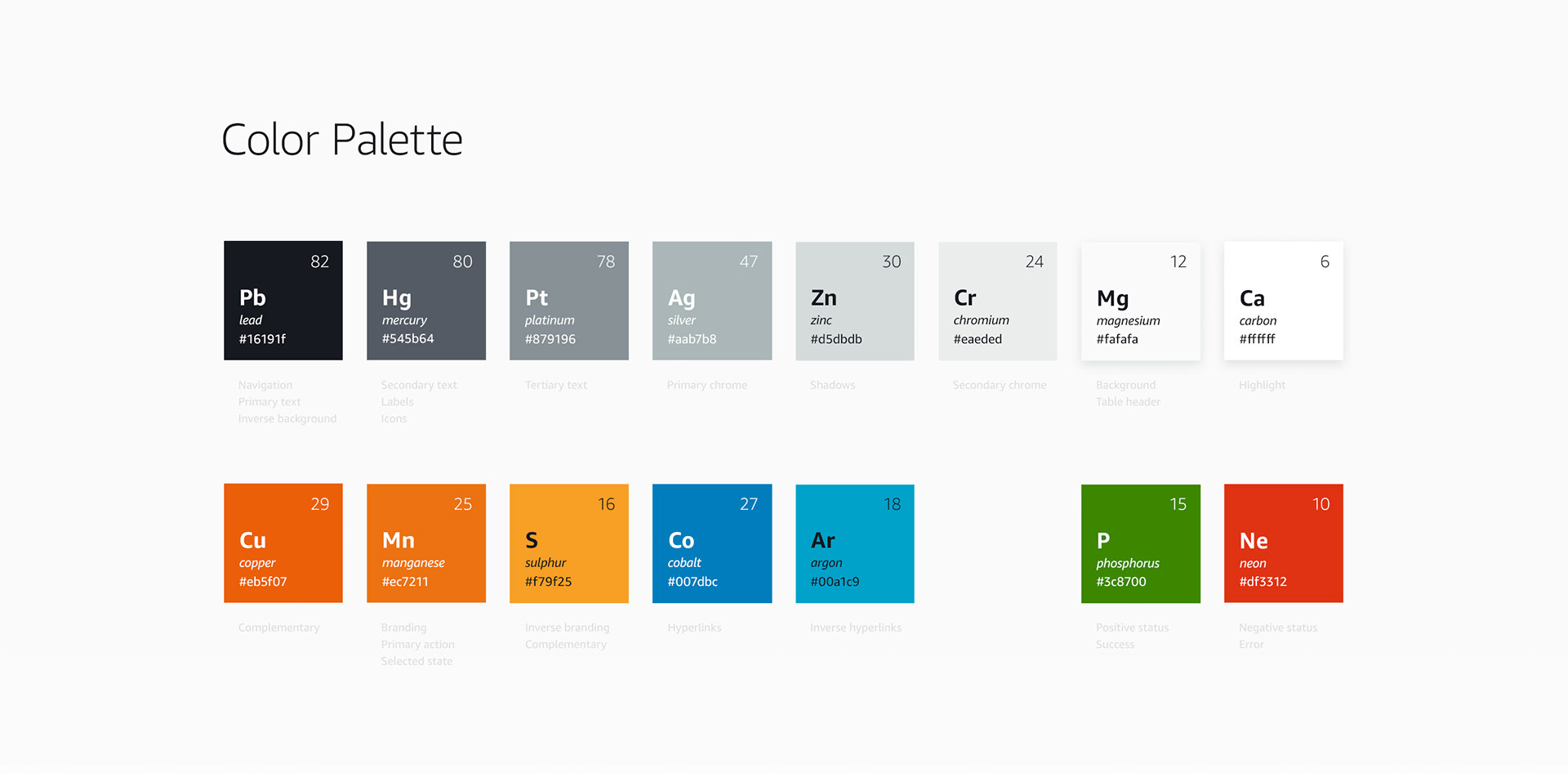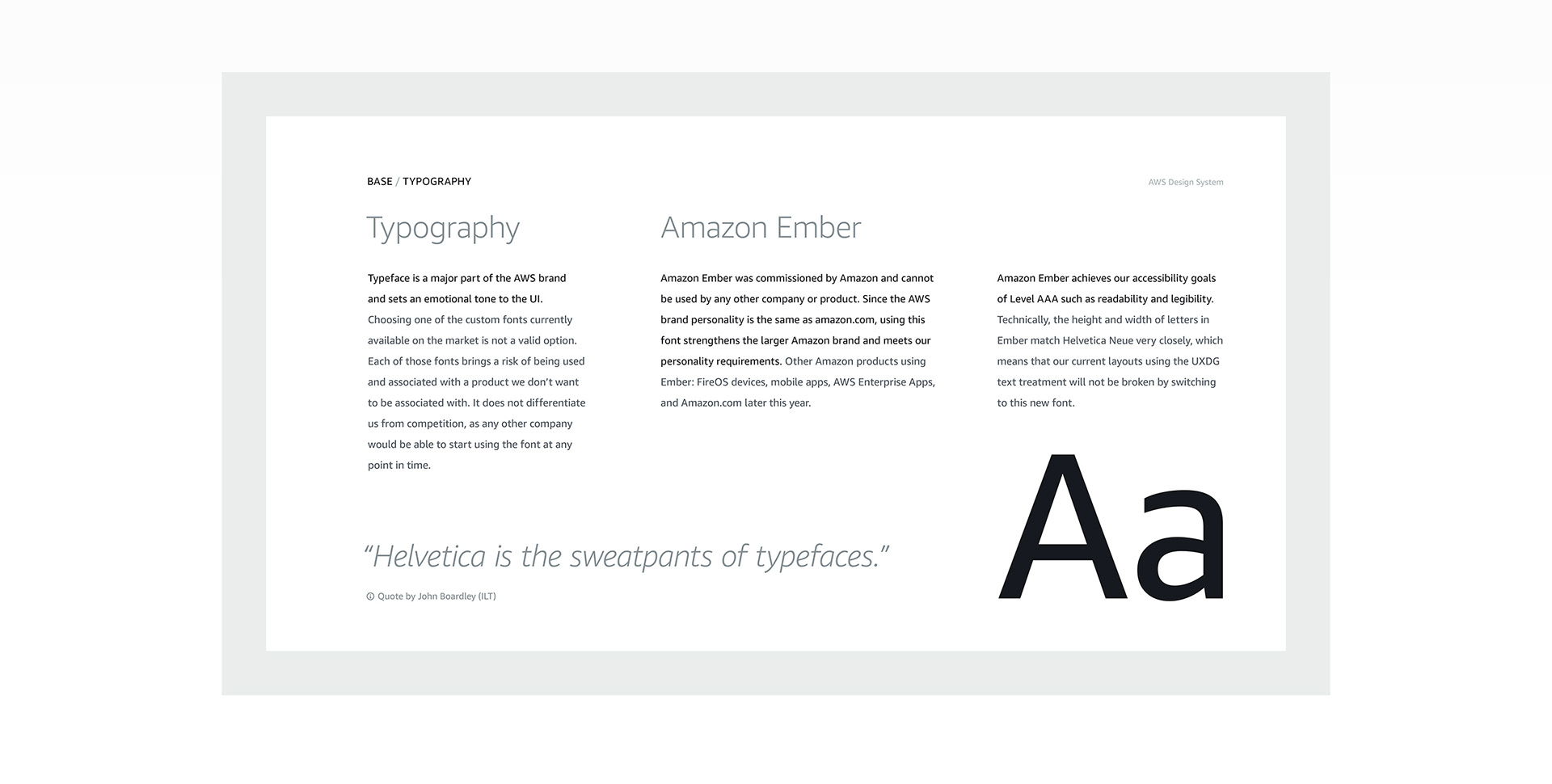September 6, 2018
Amazon Web Services: Design System
Amazon Web Services: Design System
Design Systems, a term that is easily misunderstood among many of us or within the industry. Why? Well, it’s because we all have our own conclusions about what is a Design System. I don’t personally think there are any right or wrong ways of creating a DS (Short of Design System). I believe that it all depends on what is the scale of the company you are working for whatever that is small or big. This is where the difference should be more affected by. We can go deeper on ABDZ if you wanna know more about Design Systems. Today, we are showcasing the work of Michal Simkovic who worked on the visual design of the design system for Amazon Web Services. Aside from the work itself, I love how he credits his team from the research and UX. I am sure making a design system at this scale is not a “one-solo-show”. Congrats to everyone from Amazon Web Services!
Amazon Web Services (AWS) is the largest cloud service platform, offering compute power, database storage, content delivery, and other functionality to help businesses scale and grow. Millions of customers are leveraging AWS to build sophisticated applications with increased flexibility, scalability, and reliability. Basically: Half of the internet is down? Yup, that’s most likely AWS. Even right now, reading this case study, you’re using AWS infrastructure. Amazon Web Services is a dream client of every designer. Where else would you get to design so many tables?! It took us almost a year since the inception till the first service (client) onboarding. I was responsible for the visual design. There were many folks working on research and UX part of the project, and folks selling the whole thing up the chain (please see the credits on the bottom, since a lot of them don’t have Behance account).
More Links
AoiroStudio
Sep 06, 2018
Source: Abduzeedo UI/UX
September 4, 2018
Infinite Lines & Architecture of Hong Kong
Infinite Lines & Architecture of Hong Kong
Peter Stewart is a travel photographer based in Hong Kong. We are featuring his first project ever released on Behance. Entitled Stacked – Urban Architecture of Hong Kong, it’s a collection of pictures and memoirs taken by Peter ever since 2013 and up until now. You will witness dense urban environments, and architecture of Hong Kong’s high rise public housing. In this series, you will probably enjoy of his artistic vision because tit’s all about the little details. perhaps pay some attention to the symmetry?!
Series photographed between 2013 – 2018. © Peter Stewart
More Links
Project Gallery
AoiroStudio
Sep 04, 2018
Source: Abduzeedo Photography
September 4, 2018
Beautiful & Heartwarming Illustrations by Graziela Andrade
Beautiful & Heartwarming Illustrations by Graziela Andrade
Get ready to to put a smile on your face with these beautiful illustrations. If by any reason you need a little love and some pick me up images. You are in the right place. The artist behind these pieces is a fellow Brazilian. Graziela Andrade from Aracaju. I love how, depending on the style, illustrations can take us to very different places. There are all sorts of drawings out there. And that is the magic of it. What got my attention on Graziela Andrade’s work was the softness, the cuteness, the expressiveness. Her work is simply heartwarming. You can see her amazing talent in each of her artworks. She draws super cute characters with lots of personality and attitude. And the way she uses colors and the style of her lines are really inspiring. Graziela’s illustrations will certainly win your heart.
The artist mentions that in each of her drawings you will find a little bit of herself and her story. And I do believe you can see that. The characters seem connected by this unique style. And all the pieces certainly tell a story. As you know I always like to observe artworks and create my own world around them. So you can imagine that Graziela’s pieces got me really busy and amazed. Get ready for some cuteness overload!
I started studying drawing in 2012 and after that I just couldn’t stop. During that same period I created my line of personal gifts and also illustrated a children’s book. I always loved fairy tales, magic wonderlands and princesses. And I believe I show that in my work. Drawing was always the best way to express my feelings. In each piece I draw you will find a little bit about me and my story.
More links:
GisMullr
Sep 04, 2018
Source: Abduzeedo Illustration
September 4, 2018
UI Inspiration: This week’s picks from Dumnoi Ikechukwu, Arman and more
UI Inspiration: This week’s picks from Dumnoi Ikechukwu, Arman and more
It’s that time of the week for our collection of UI/UX designs to boost your UI inspiration. We are focusing on cool animations, layout designs, UX thinking and more. We are mixing it all from static, dynamic and even live prototypes, this might be a great weekly series to bookmark! This week, we are kicking it off with a Workout App screens designed by Dumnoi Ikechukwu and also a clean UI for Restaurant Finder App by Adam Sokołowski.
In this collection we are featuring the work from Arman, Dumnoi Ikechukwu, Justin, Adam Sokołowski and more.
More Links
- For more, check out Dribbble
- Follow my tweets @aoirostudio
- Follow my pictures on Instagram
via Dribbble
 Design by Dumnoi Ikechukwu
Design by Dumnoi Ikechukwu
 Design by Arman
Design by Arman
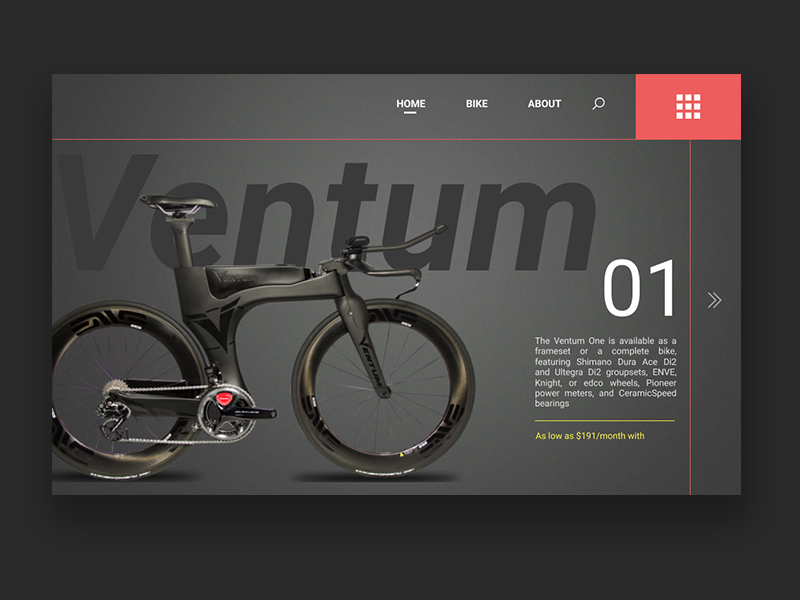 Design by Justin
Design by Justin
 Design by Dumnoi Ikechukwu
Design by Dumnoi Ikechukwu
 Design by Adam Sokołowski
Design by Adam Sokołowski
 Design by Dipmal Lakhani
Design by Dipmal Lakhani
 Design by Sahil Pandita
Design by Sahil Pandita
 Design by Daria Krav
Design by Daria Krav
 Design by Templates
Design by Templates
 Design by Peter Hamilton
Design by Peter Hamilton
 Design by Rob Robertson
Design by Rob Robertson
 Design by Daniil Lisnyak
Design by Daniil Lisnyak
 Design by Bayzid Khan
Design by Bayzid Khan
 Design by alaisahabim
Design by alaisahabim
 Design by UXD Technologies
Design by UXD Technologies
 Design by Tomi | GraphiXaar
Design by Tomi | GraphiXaar
 Design by Beqa Giorgadze
Design by Beqa Giorgadze
 Design by Dumnoi Ikechukwu
Design by Dumnoi Ikechukwu
AoiroStudio
Sep 04, 2018
Source: Abduzeedo UI/UX
September 3, 2018
Stylish Editorial Design for Design Fabric Fest
Stylish Editorial Design for Design Fabric Fest
Shrenik Ganatra and Ninad Kale shared a beautiful editorial design project on their Behance profile. It was commissioned for a design event called Design Fabric Fest. Featuring an awesome graphic design style, they played with bold typography and really nice graphic elements to create the booklet. The colors are also very nicely chosen, mixing a vibrant red with dark purple and yellow. There are a lot of things to love about this project, it reminds me of when I started my design career, in college, where our focus and dream was to create printed pieces like this one.
For more information about Shrenik and Ninad, make sure to check out their Behance profiles.
Editorial Design



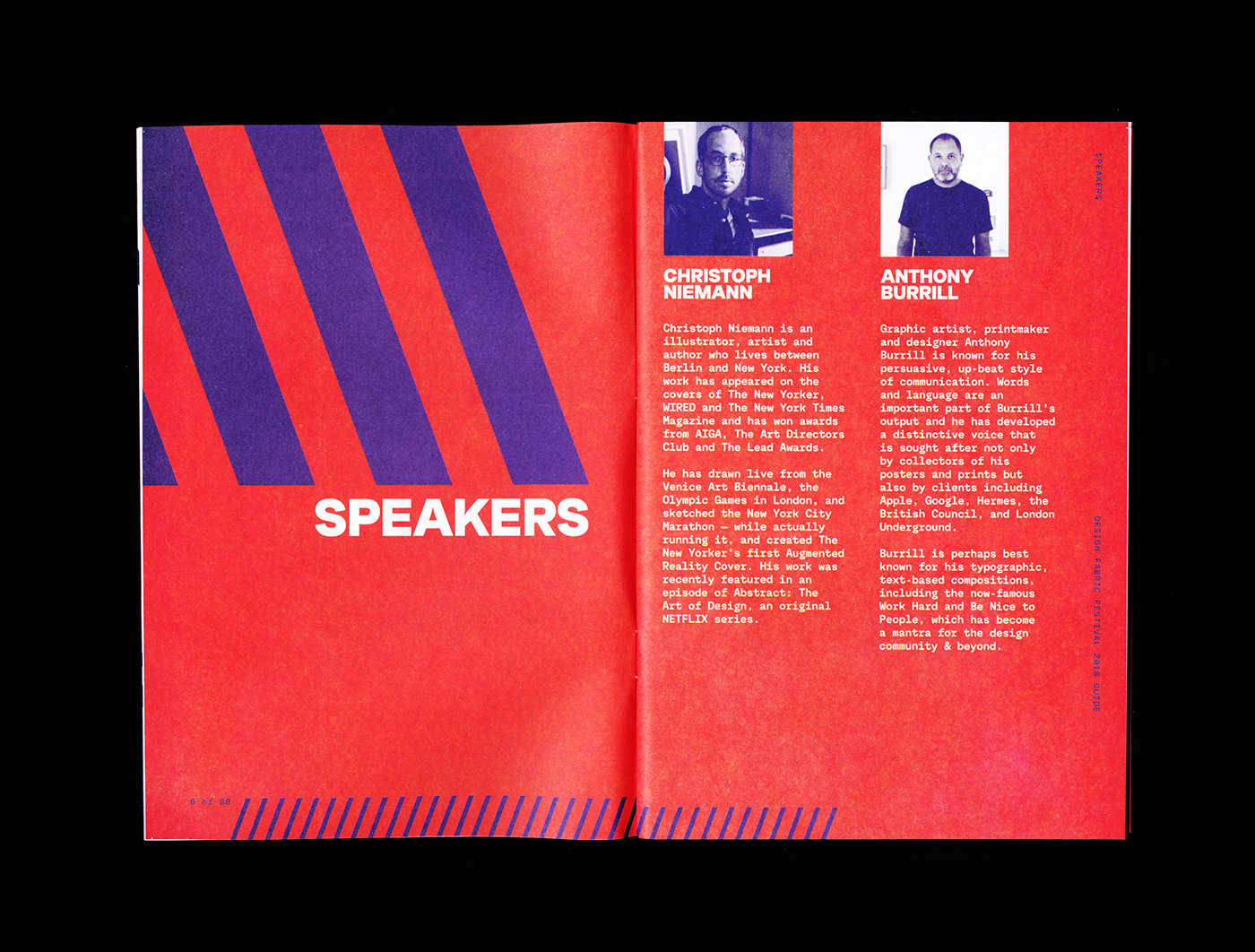
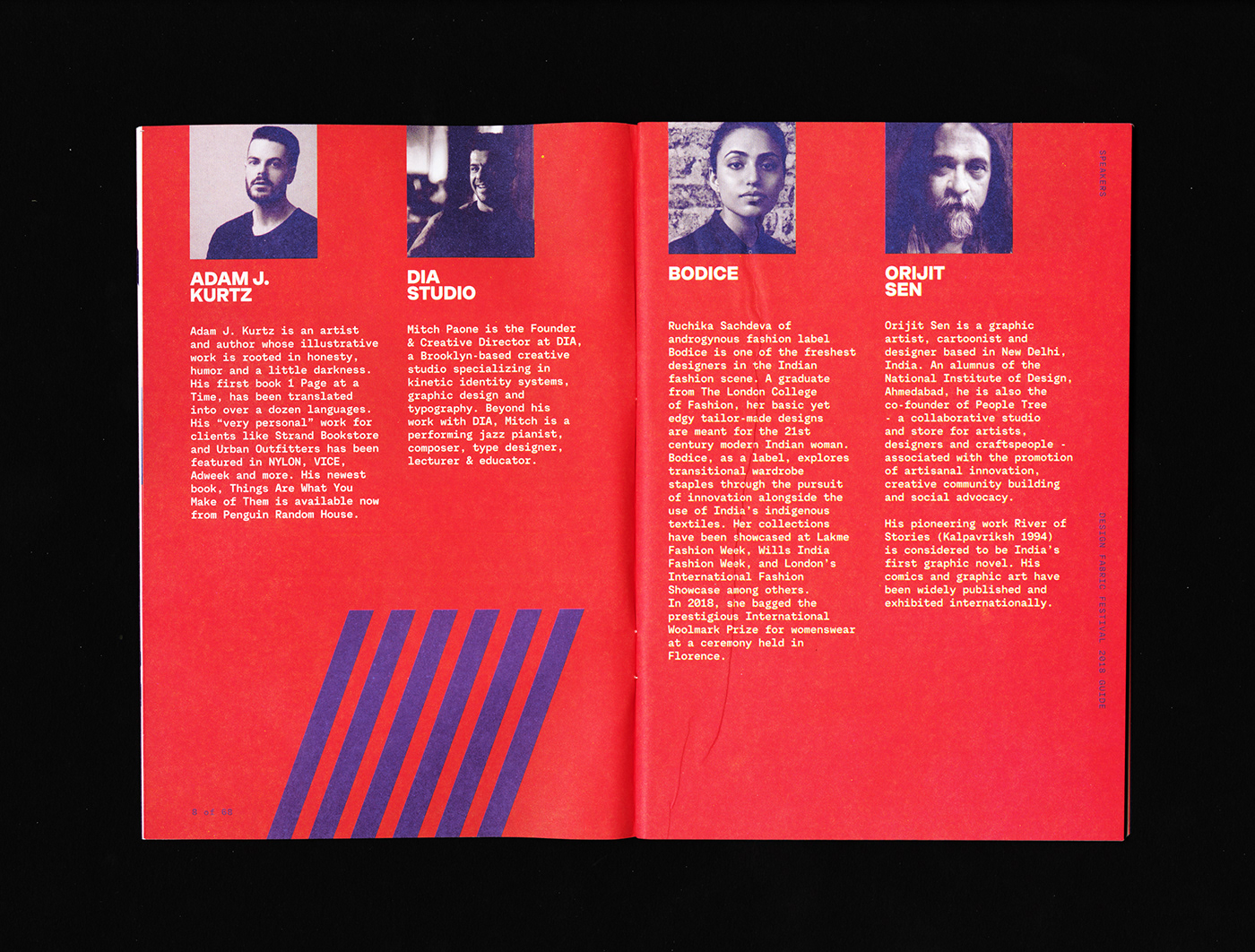


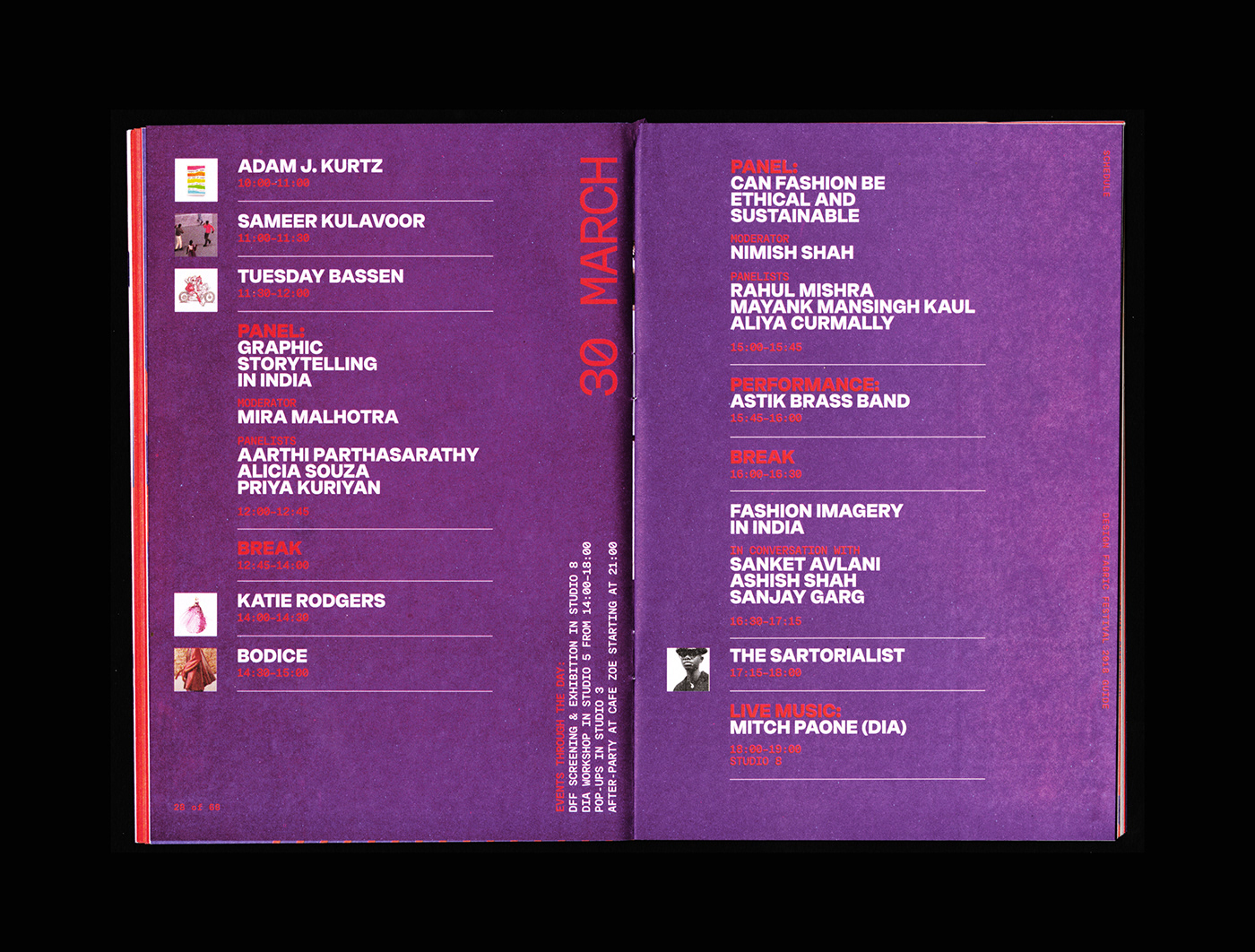
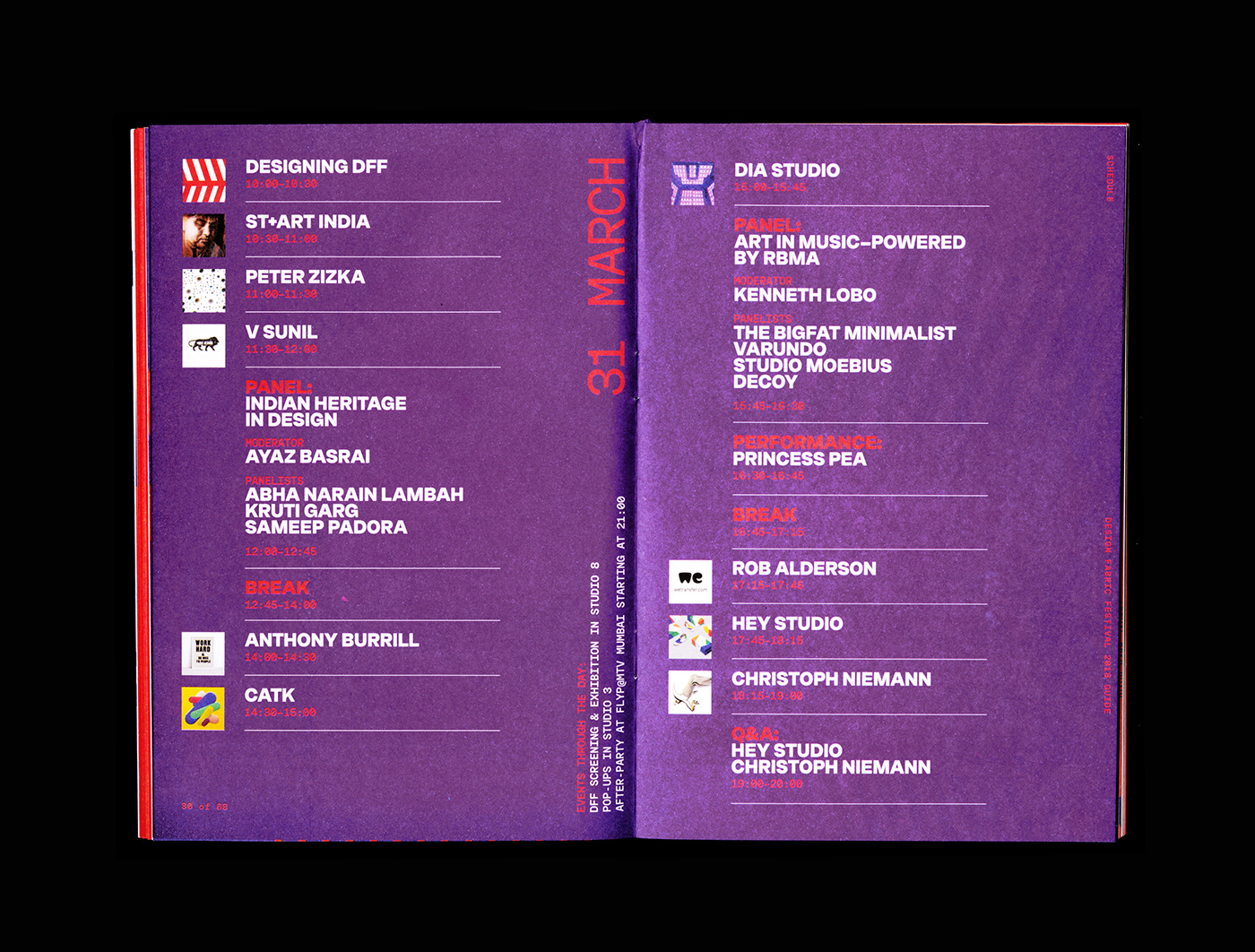
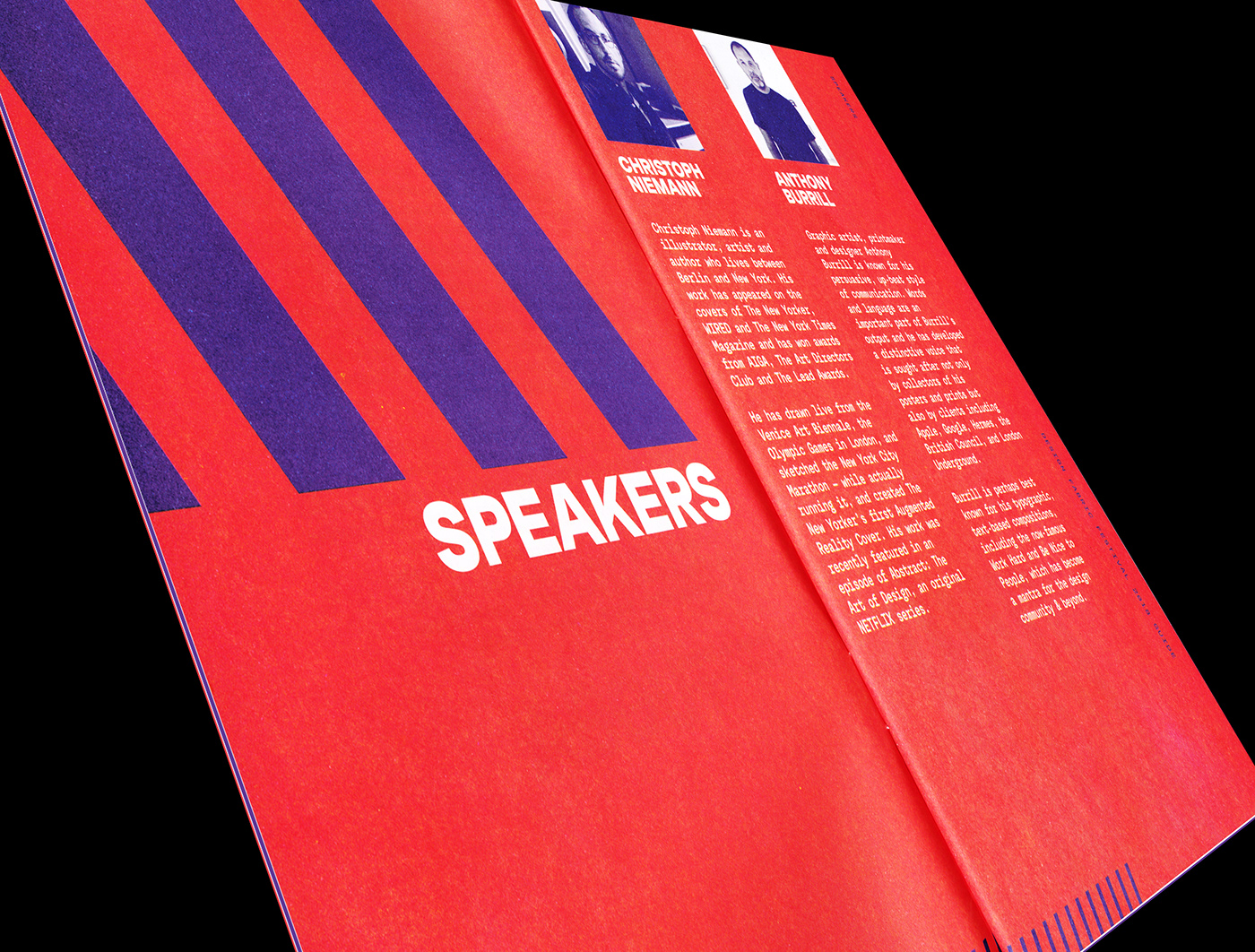

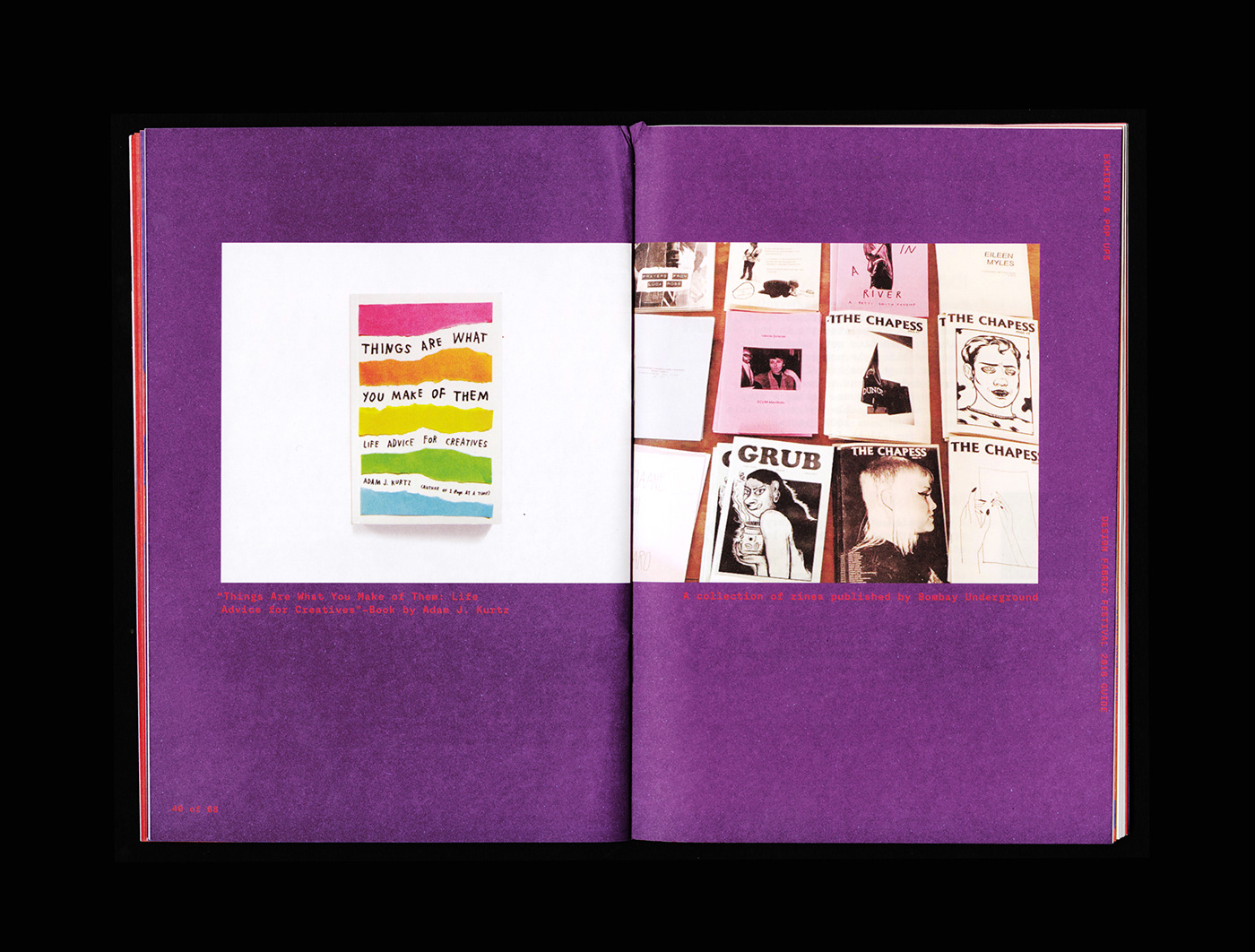
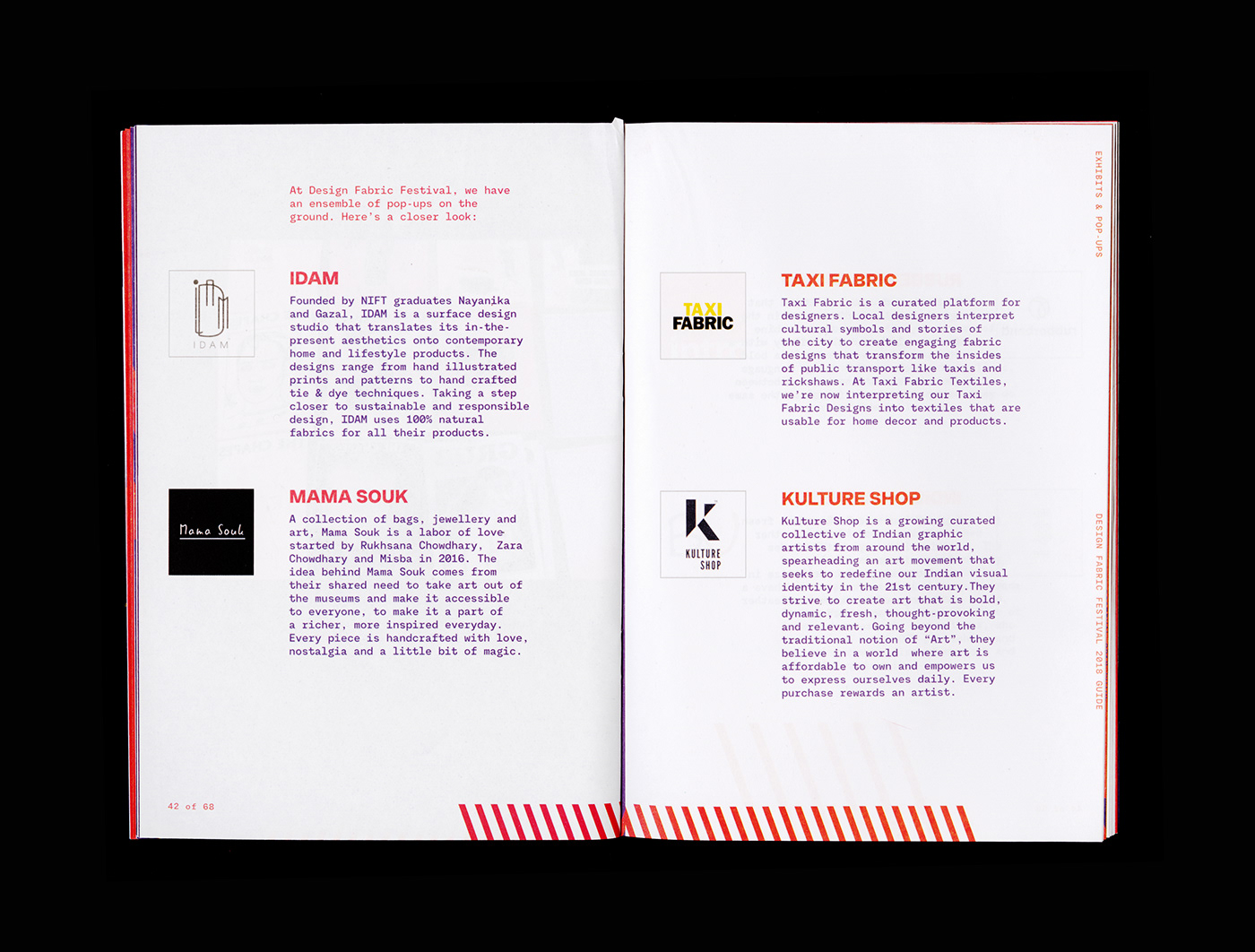

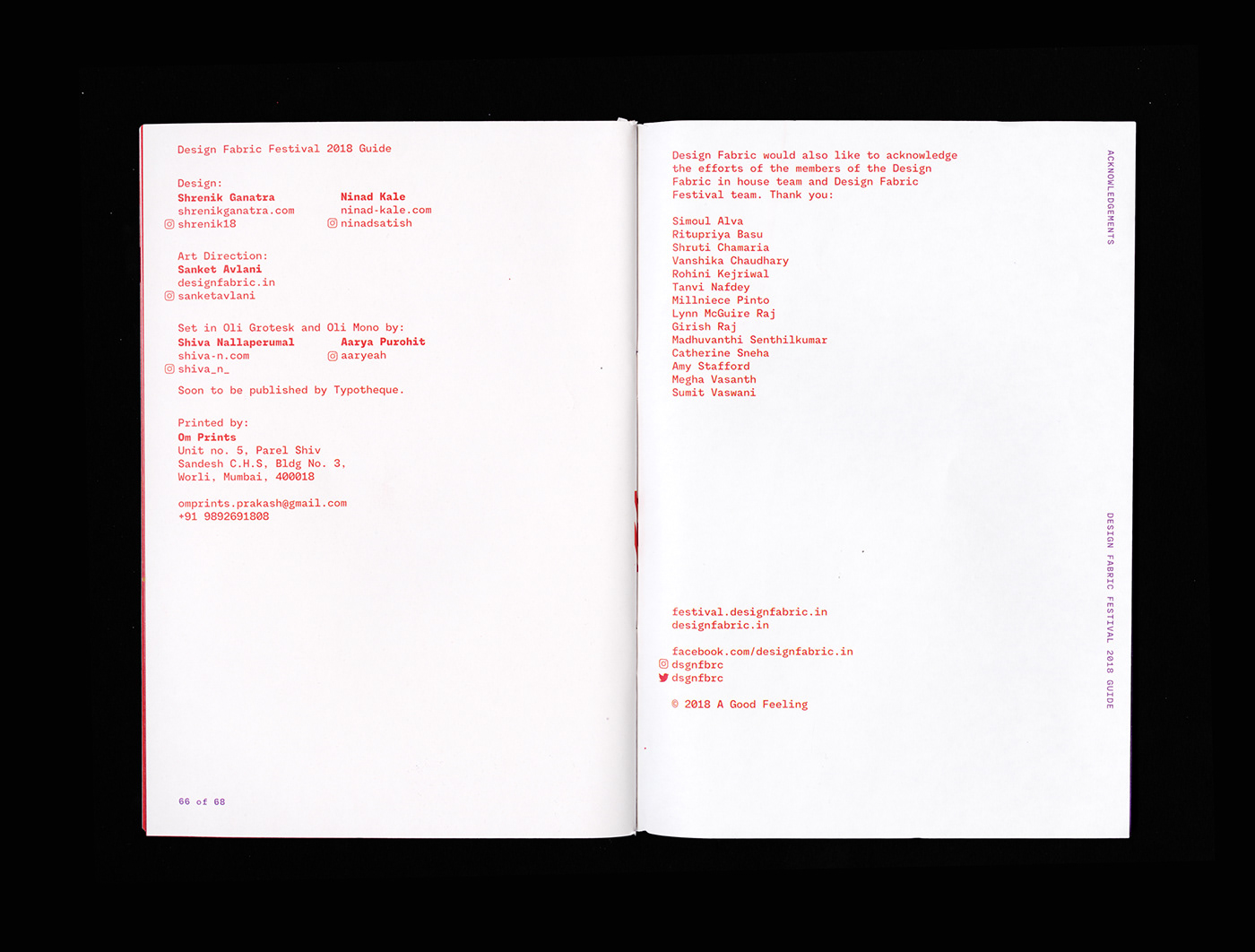
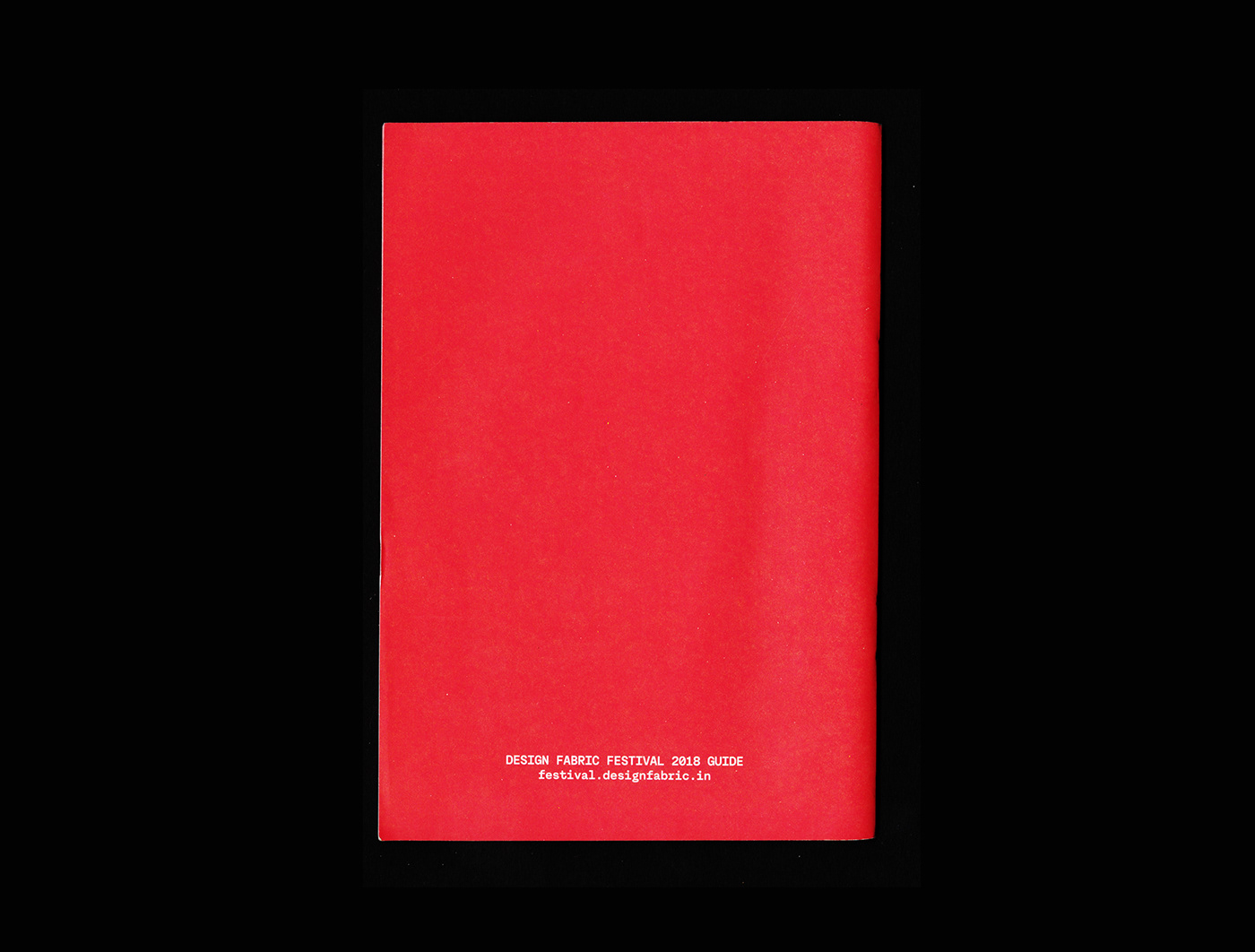
Credits
- Design Fabric Festival 2018 Guide
- Design: Shrenik Ganatra + Ninad Kale
- Art Direction: Sanket Avlani
- March 2018
abduzeedo
Sep 03, 2018
Source: Abduzeedo Editorial Design
September 2, 2018
‘Trial by Fire’ Review: Laura Dern and Jack O’Connell Shine in a Damning Condemnation of the Death Penalty — Telluride
“Fire doesn’t destroy evidence,” one of the arson experts testifies in court. “Fire creates evidence.” That it does. But what if the evidence it creates is misinterpreted by the people who are entrusted to understand it? What if the experts are clouded by confirmation biases, hampered by outdated investigative methods, and complicit in a judicial system that disproportionally targets the poor? And what if — as a direct result of those other what ifs — an innocent man was executed for murdering his own children? In Texas, which executes more than five times as many people as any other state, those aren’t exactly hypothetical questions.
A clumsy prison drama that’s baked into a compelling argument against the death penalty, Ed Zwick’s “Trial by Fire” dramatizes the tragic story of Cameron Todd Willingham, who was wrongly convicted of burning his house down with his three young daughters inside on December 23, 1991. It was just two days before Christmas, a quirk of the schedule that made the accusations seem all the more sinister — a throwaway detail made it that much easier for the prosecution to paint Willingham as an evil soul whose pentagram tattoo indicated an allegiance to the devil.
Not that it is, was, or ever has been hard to convict a man like that. From his face to his police file, the twenty-something Willingham looked like a composite sketch of every white guy on Death Row. He had a mullet, but not a job (or, it would seem, a high school diploma). He had as many DUIs as he did children. He hit his wife, and she hit him back. Looking at Willingham from the jury box, you’d sooner expect to see the guy on an episode of “Cops” than at the center of a movie by the director of “Glory.”
English actor Jack O’Connell (“Starred Up,” “Unbroken”), so good at mining humanity from horror shows of masculinity, does everything in his power to ensure that we make all the worst assumptions about his character. From the start of this dark story (when Willingham calmly watches from a safe distance while his babies are burned alive), to the bitter end (when he still maintains his innocence, and screams that his ex-wife is a bitch), O’Connell never cheats our sympathies. The rest of the film doesn’t either. Geoffrey S. Fletcher’s functional script allows Willingham to mature during his 12 years on Death Row, and to repent for the way that he treated the women in his life, but it narrowly avoids the fatal mistake of making us feel like Willingham should be exonerated because he’s nice, and not because he’s innocent.
Adapted with great passion (but less than zero panache) from David Grann’s extraordinary 2009 “New Yorker” article of the same name, “Trial by Fire” works in spite of its stylelessness. Zwick has always been a happily middlebrow director who prefers to step out of the way and let the sweep of his stories do the heavy lifting, but this is the first of his films that feels like an assemblage of non-choices. There’s value in recognizing that Willingham’s story isn’t so different from hundreds of others that have been told by our criminal justice system, but it almost feels as though Zwick uses that as an excuse to make things as generic as possible.
The early scenes that introduce us to Willingham and his wife (played to flaky, salt-of-the-earth perfection by “The Deuce” star Emily Meade) are bland and scattershot, as indifferent to the emotional aftermath of the fire as the state of Texas is toward the man they decide to blame for starting it. Zwick might want to keep us focused on the facts, but he often accomplishes that by depriving us of any deeper insight. Without a clear aesthetic to illustrate the absurdity of Willingham’s arrest, or to convey the horrifying powerlessness of his imprisonment, the first half of “Trial by Fire” just sort of happens. It’s a veritable parade of prison-movie tropes (the helpful black cellmates the abusive white guard, the solitary confinement dream sequences), but Zwick’s refusal to go full “Shawshank” results in a “terrible soup / such small portions” situation — the film can’t even commit to its clichés.
But then, after the movie skips forward seven years around its halfway point, we and Willingham are graced by a ray of light: Laura Dern. Elizabeth Gilbert is a bored, middle-aged writer and mother of two who’s so compassionate that her dying ex-husband often refers to her as a saint. Or maybe it’s just that she likes to fix the things she can, because it spares her from having to dwell on the things that she can’t (Dern’s pained half-smile does a wonderful job of obscuring the difference). One day, after helping a stranded motorist like the good samaritan that she is, Gilbert is told of a letter-writing program for death row inmates. Struck by the sincerity of Willingham’s writing, Gilbert is soon visiting her pen pal in prison on a regular basis.
“Trial by Fire” is completely reignited by the scenes between Dern and O’Connell, who form a compelling bond through a thick sheet of plexiglass. More than just an acting masterclass, the probing, delicate conversations between their characters build towards a harrowing tap dance between hope and surrender. It’s tempting to think that the film should have just started here, with Dern and O’Connell locked in a lopsided war against a broken state; we could have filled in the rest by simply reading their faces.
It takes so little for Gilbert to recognize a miscarriage of justice, and even less to find irrefutable evidence that Willingham was put on the chopping block for the sake of good politics (someone observes that executions double during election years). Rising from the ashes of a tired prison story, “Trial by Fire” erupts into a harrowing condemnation of the criminal justice system as Willingham’s execution races closer, and the evidence of his innocence grows more irrefutable. The twists folded into the film’s last act are stranger than fiction and profoundly unfair, but also all too easy to believe in a true story that always defaults to injustice. What Zwick lacks in artistry, he makes up for in anger, and “Trial by Fire” burns with a righteous fury that spreads right off the screen. It may not be a great film — at certain times, it may not even be a good one — but it makes a more convincing argument about Cameron Todd Willingham than the state of Texas ever did.
Grade: C+
“Trial by Fire” premiered at the 2018 Telluride Film Festival. It is currently seeking U.S. distribution.
Source: IndieWire film
September 2, 2018
‘The Sisters Brothers’ Review: Joaquin Phoenix and John C. Reilly Star in the Most Sensitive Western Ever Made — Venice
“The Sisters Brothers” is a sensitive western about brotherly love that just happens to revolve around stone-cold murderers. It’s a context that requires an original approach to the genre, and that’s exactly what veteran French director Jacques Audiard brings to his first English-language effort. However, in retrospect, Audiard is a natural fit: With movies like “Dheepan” and “A Prophet,” Audiard makes rich character studies about people trying to do the right thing in a world stacked against them, and nothing in American mythology provides a better template for exploring that crisis than the Wild West. However, it’s the stirring chemistry between Joaquin Phoenix and John C. Reilly as committed siblings that transforms these lively, violent circumstances into a sweet and intimate journey designed to catch acolytes of the genre off-guard.
Based on Patrick Dewitt’s 2011 novel, “The Sisters Brothers” unfolds against the backdrop of the Gold Rush, though the historical context is secondary to the narrative it sets in motion. In the first frame, titular Sisters brothers Charlie (Phoenix) and Eli (Reilly) emerge from nighttime shadows to massacre an entire house full of targets. Employed by an enigmatic gangster known as The Commodore (Rutger Hauer, in a fleeting but welcome cameo), the brothers careen across the barren landscape juggling various missions to murder men for reasons irrelevant to their plight. It’s a subversive adventure story about the supposed bad guys, a hit-man comedy by way of Peckinpah, and remarkable for the way it makes the familiar backdrop so appealing from the start.
For the hard-drinking Charlie, this endless killing spree is a justification unto itself; the gentler Eli, however, has started to question the underlying purpose of their missions. Little by little, the focused script (credited to Audiard and Thomas Bidegan) reveals details about this odd pair and the history of their bloody career path; so long as the movie hovers in the center of this dynamic, it remains a fascinating exploration of an unusual family bond.
“The Sisters Brothers” mines so much substance out its central characters that it falters when it cuts away from them. When the brothers are hired to track down a supposed thief named Hermann Kermit Warm (Riz Ahmed, wearing a classy mustache and an inviting grin), the story shifts to his experiences with Morris (Jake Gyllenhaal), the bounty hunter who nabs Hermann under the auspices of delivering him to the killers. Sporting a peculiar British accent that makes his lopsided “Okja” character look normal, Gyllenhaal stands out as odd variable in this otherwise credible scenario, though his scenes with Hermann develop their own sense of intrigue. It turns out the alleged criminal actually has a water-based formula with the ability to make gold appear in river beds, and its financial prospects appeal to Morris enough that he decides to become his prisoner’s business partner as they plot to foil the Sisters brothers when they arrive.
But really, this scenario sets in motion more complications for the brothers to escape, as they continue to contend with the broader existential question of what they should do with their time. Enduring harsh conditions on the road between Oregon and California, the Sisters spend much of the movie saving each other from physical harm, whether it’s abrasive spider bites or drunken saloon showdowns, and it’s so endearing to watch them survive each new twist that it renders broader stakes irrelevant. There’s an Altmanesque quality to the way Audiard builds out this world, with the ever-reliable Alexandre Desplat’s jangly score and Benoit Debie’s warm, painterly visuals opening up the brothers’ journeys to the boundless possibilities of the frontier. It almost seems as though they could keep at it forever, but every messy gunfight inches them closer to the possibility that time is running out.
About those gunfights: While Audiard has never made a proper action movie, many of his credits have a brutal, physical intensity, from the grotesque prison showdowns of “A Prophet” to the street brawls of “Rust and Bone” and the Rambo-like militant finale of “Dheepan,” from which Audiard drew on “The Wild Bunch.” To that end, he excels at constructing the most intense sequences of the movie. Filled with jolting sound design and clever misdirection, the shootouts in “The Sisters Brothers” have a sustained potency and remain unpredictable until the very last moments, much like the brothers themselves.
Reilly, who also produced the movie, tends to strike a distinctive tone between goofball and gentleman, a balance that makes his character here so likable from the outset. In a standout moment at a brothel, he attempts to engage in the most kindhearted sexual role-playing in film history, and his bedroom antics are so lovable the prostitute (“Fargo” Season 1 star Allison Tolman) is led to tears; next door, of course, an inebriated Eli’s wrecking havoc on cue. The sad-funny balance of this sequence epitomizes the movie’s endearing tone.
Phoenix, buried behind his usual scrappy beard, peers out at every twist with the same wild eyes that have become his trademark. A sort of companion piece to his emo hitman in Lynn Ramsay’s “You Were Never Really Here” earlier this year, Phoenix plays Eli as the ultimate foil to his brother’s measured world view: Whereas Charlie constantly worries about his behavior, Eli never hesitates to maintain control of a situation — in a scene that finds the brothers facing down the barrels of a few guns at once, a typically sloshed Eli stares back at their foes and confidently vomits before taking them out.
While not every turn of events remains so involving, the siblings remain a key selling point, as the title of “The Sisters Brothers” provides a template for examining one of its core themes: This most masculine of genres often takes masculinity for granted, but “The Sisters Brothers” doesn’t let its tough guys off the hook. They’re vivid, emotional beings, the products of troubled upbringings who live hand-to-mouth the only way they know how. When they finally come around to confronting a major figure from their past, it arrives as a kind of spiritual awakening, the cinematic equivalent of watching a grown man cry.
Grade: B+
“The Sisters Brothers” premiered at the 2018 Venice Film Festival. Annapurna Pictures releases it theatrically on September 21.
Source: IndieWire film
September 2, 2018
As Telluride Roars, Limited Releases Whimper: With ‘The Little Stranger’ Weak, Only ‘Searching’ Clicks
Wile Labor Day weekend is one of the biggest weekends for specialized distributors with Telluride, Venice, and the upcoming Toronto Film Festivals, it’s the least appealing holiday to open new limited films. Most of the limited action came from two documentaries, both of which are streaming: “Pick of the Litter” and “Active Measures.” There was one significant feature, Lenny Abrahamson’s “The Little Stranger,” which went wide and barely registered with a under-$900 per-theater-average.
Sony, meantime, is having some initial success with its John Cho thriller “Searching.” After a strong limited start last weekend, it found solid results in a moderately wide release. This is a notable, non-awards season release for a studio’s staggered expansion film.
Opening
The Little Stranger (Focus) – Metacritic: 69
$420,000 in 474 theaters; PTA (per theater average): $886
Irish director Lenny Abrahamson broke out three years ago with “Room,” including a Best Director Oscar nomination. His follow up film — a horror mystery set in a dilapidated haunted mansion — has some of the claustrophobic feel of “Room.” But the film, taken on by Focus pre-production, received less favorable reviews and opened in advance of the fall festivals on a national release. The response is underwhelming, although it did have a decent Saturday uptick that suggests it is reaching some of the older audience it wants.
What comes next: This level of gross doesn’t encourage further expansion.
Ya Vermemos (Lionsgate)
$1,800,000 in 369 theaters; PTA: $4,878
The title translates as “We’ll See.” This Mexican comedy (already a big hit at home) is the latest from Lionsgate’s Spanish-language partner Pantelion. It centers on a boy dealing with his parents divorce at a time when his eyes are failing. It opened mid-range for their releases that play at mainly strong Latino-audience theaters.
What comes next: This looks to have found its appropriate audience and theaters, with not much expansion likely.
Let the Corpses Tan (Kino Lorber) – Metacritic: 62; Festivals include: Toronto, AFI 2017
$12,138 in 3 theaters; PTA (per theater average): $4,046
This Belgian/French gold heist thriller opened in three New York/Los Angeles theaters with modest review support and similar grosses in its initial week.
What comes next: This is set for mostly limited engagements in prime arthouses ahead.
Active Measures (Neon) – Metacritic: 68; Festivals include: Hot Docs 2018; also streaming
$8,143 in 2 theaters; PTA (per theater average): $4,071
Release by Neon’s partnered label Super LTD, this documentary that connects the dots about Russia’s involvement in U.S. politics opened at two prime New York and Los Angeles theater alongside its home viewing availability. The results sold some limited interest, but more importantly got the reviews and other media attention. It was the top documentary on iTunes this weekend, and placed #7 on their overall rental chart.
What comes next: Mostly home viewing, although its timely subject to garner it above average theater play also.

“Pick of the Litter”Pick of the Litter (IFC) – Metacritic: 62; Festivals include: Slamdance 2018; also on Video on Demand
$19,078 in 2 theaters; PTA (per theater average): $9,539
A documentary on an appealing subject — the training of support dogs — opened in New York and Los Angeles to quite decent results, especially with its parallel initial home viewing platform release. This could be sort of film (as IFC has shown in the past) that can still appeal in theaters with alternatives out there.
What comes next: The next openings are in the Bay Area and Portland this Friday.
A Paris Education (Kino Lorber) – Metacritic: 52; Festivals include: Berlin 2018
$3,358 in 1 theater; PTA (per theater average): $3,358
Without significant review support, this single-screen Manhattan debut for this film set in the world of French cinephiles had a minor initial result.
What comes next: This will see some limited specialized expansion ahead.

“Searching”
Week Two
Searching (Sony)
$5,700,000 in 1,207 theaters (+1,198); PTA: $4,722; Cumulative: $6,208,000
Sony has managed a more-than-respectable initial result in its expansion of this Sundance-premiered sci-fi thriller with John Cho in the lead. It ranks #5 overall for the weekend. This can be tricky territory for major studios, and the longer-term trajectory for the film will be better seen next weekend. But so far so good.
Papillon (Bleecker Street)
$351,530 in 539 theaters (-5)
This remake of the McQueen/Hoffman prison escape drama collapsed its second weekend after a mediocre start. The drop was about two thirds.
The Bookshop (Greenwich)
$190,520 in 60 theaters (+56); PTA: $3,175; Cumulative: $261,029
Veteran director Isabel Coixet’s mostly Spanish-made (in English) period film set on the British coast showed some older audience interest in a rapid second-week expansion. This move should position it to benefit ahead from whatever positive word of mouth is could receive.

“Support the Girls”
Burn Later Productions/Kobal/REX/Shutterstock
Support the Girls (Magnolia)
$(est.) 20,000 in 20 theaters (-15); PTA: $(est.) 1,000; Cumulative: $(est.) 99,000
Andrew Bujaski’s acclaimed feminist comedy with Regina Hall is falling far short of the attention it deserves. It lost many of its initial theaters, with low grosses overall in the remaining ones.
John McEnroe – In the Realm of Perfection (Oscilloscope)
$44,190 in 21 theaters (+20); PTA: $1,264; Cumulative: $44,190
McEnroe ranks as an iconic figure with Ruth Bader Ginsberg and Fred Rogers, but this well-received documentary looks to have more limited interest.

“Juliet, Naked”
Courtesy of Sundance Institute, photo by Alex Bailey.
Ongoing/expanding (Grosses over $50,000)
Juliet, Naked (Roadside Attractions) Week 3
$804,025 in 318 theaters (+275); Cumulative: $1,253,000
With Ethan Hawke leading the strong ensemble, this relationship film with a musician-obsession twist expanded nationally this weekend. The results show some crossover interest, but this looks like it might struggle to break out much wider.
The Wife (Sony Pictures Classics) Week 3
$524,346 in 78 theaters (+60); Cumulative: $1,014,000
This story of how the marriage of a Nobel Prize winner is affected by his award, with Glenn Close getting some of the best reviews of her career, is thriving as it expands. This is grossing at a pace that looks like it will approach “Call Me By Your Name” territory SPC’s biggest grossing film in the last two and a half years.
Sorry to Bother You (Annapurna) Week 9
$267,000 in 505 theaters (+417); Cumulative: $16,958,000
A holiday weekend rebooking of Boots Riley’s genre-bending hit will push it over $17 million. That’s third best among all the many successful films that premiered at this year’s Sundance.

“Eighth Grade”
A24
Eighth Grade (A24) Week 8
$266,000 in 227 theaters (-139); Cumulative: $12,929,000
After a wide national run, with most of its business coming from a smaller percentage of its runs, the middle-school transition to adolescence story is one of the biggest live-action specialized films of 2018 — at least before the deluge of fall films.
Three Identical Strangers (Neon) Week 10
$238,260 in 170 theaters (-51); Cumulative: $11,583,000
This very successful documentary has nearly tripled the gross of “Searching for Sugar Man” three years ago. That similar story (a compelling personal mystery that played as a narrative) went on to win the Best Feature Documentary Oscar for 2012.
Puzzle (Sony Pictures Classics) Week 6
$187,013 in 213 theaters (-52); Cumulative: $1,574,000
The story of a woman emerging from her suburban family shell is winding down its run with a mid-level total of $2 million the likely final result.
The Miseducation of Cameron Post (FilmRise) Week 5
$70,000 in 45 (-40) theaters; Cumulative: $768,420
Abusive gay conversion therapy and its impact is the subject of this Sundance-debuted drama, which is winding down after getting elevated national art house attention.
Won’t You Be My Neighbor? (Focus) Week 13; also streaming
$70,000 in 113 theaters (-47); Cumulative: $22,275,000
Nearing the end of its theatrical run (it’s transitioning to home viewing), Fred Rogers is the biggest documentary star in years for this wildly successful film. It stands as the biggest specialized hit of the summer.
Blaze (IFC) Week 3 7-110
$62,636 in 20 theaters (+17); Cumulative: $174,701
Still playing mainly in Texas (Nashville also opened), Ethan Hawke’s biofilm about a cult music figure continues to show some interest in advance of its openings, starting this Friday, in the rest of the country.
Leave No Trace (Bleecker Street) Week 10
$56,357 in 98 (+32) theaters; Cumulative: $5,886,000
With $6 million in view, Debra Granik’s drama looks to equal Bleecker Street’s “Captain Fantastic” two years ago.
Also noted:
We the Animals (The Orchard) – $38,410 in 19 theaters; Cumulative: $200,270
Madeline’s Madeline (Oscilloscope) – $28,150 in 31 theaters; Cumulative: $111,821
McQueen (Bleecker Street) – $22,920 in 17 theaters; Cumulative: $1,186,000
Scotty and the Secret History of Hollywood (Greenwich) – $14,397 in 17 theaters; Cumulative: $381,229
Memoir of War (Music Box) – $10,857 in theaters; Cumulative: $59,239
Sign Up: Stay on top of the latest breaking film and TV news! Sign up for our Email Newsletters here.
Source: IndieWire film
September 2, 2018
‘First Man’ Is the Most American Movie of the Year, and the Backlash Proves that Donald Trump Is Killing the Movies — Telluride Critics Notebook
On Thursday night, a crowd gathered at a welcome dinner held by the Telluride Film Festival. It was a full day before Senator Marco Rubio made the ridiculous accusation that Neil Armstrong biopic “First Man” was un-American because it omitted Armstrong planting the flag on the moon, but political discourse was everywhere. In one corner, the conversation shifted from some of the anticipated festival movies to a recent episode of The Daily, the New York Times’ news podcast, and why some people can’t appreciate Rachel Maddow’s reporting. A veteran distributor sitting nearby rolled his eyes. “Donald Trump is killing the movies,” he said.
Though our reality-tshow president has yet to launch a blatant cultural war against the moving image, the point resonated nonetheless: The chaotic news cycle stimulated by the lunatic at the top has eclipsed the appeal of more familiar storytelling. Headlines have become the narratives of the day. Movies that offer sophisticated perspectives on the world can’t keep up with a partisan discourse that rushes to judgement about everything in its path and keeps moving ahead.
So it went with “First Man,” Damien Chazelle’s impressionistic portrait of Armstrong’s multi-year preparation for the moon mission, and surreal experience of loneliness with the universe that he experienced on the surface. Rubio’s ignorant complaints drew further ammo from star Ryan Gosling’s claim that the moon landing was an achievement for all mankind, not only the United States, effectively giving the GOP echo chamber an excuse to ramble on further without seeing the movie. The cycle of outrage moved so rapidly that both Chazelle and Armstrong’s children issued statements defending the movie in an attempt to correct the news cycle.
They should have less to worry about once the rest of the world sees “First Man.” Anyone who did would come to the conclusion Chazelle has made the most American movie of the year, one that wields its ideals like a blunt weapon while opening them up to a mass audience.
Much of Chazelle’s “La La Land” followup often adheres to a familiar mode of sentimental storytelling. Gosling’s Armstrong copes with his worried spouse (Claire Foy) and his child while dealing with the lingering grief of his daughter’s death. The recurring cutaways to the late girl are some of the more heavy-handed moments in a movie that works best in the cockpit, where Chazelle’s extraordinary craftsmanship comes into play, but it’s all related to the same motif: Faced with traumatic personal hurdles, Armstrong pushes ahead. Gosling, who spends much of the movie with a dazed expression that suggests he’s on the moon long before the character touches down, never delivers a tell-all monologue to explain his drive — and yet it has a familiar resonance all the same. When Armstrong stands on the lunar surface and gazes back at his lander (where, yes, you can see the fucking flag), it looks like a fragile miniature against an endless black void. The lyrical imagery carries powerful resonance: an American ideal achieved against the backdrop of the great unknown.
Both ends of the political spectrum tend to celebrate this concept as a key aspect of the country’s identity — survival under impossible odds, commitment to achieving dreams rather than gazing at them from afar, and utilizing the country’s resources to make it all happen. “We choose to go to the moon in this decade and do the other things,” JFK said in 1961, “not because they are easy, but because they are hard.” As he gears up for training in “First Man,” Gosling hears those words emanating from a television screen, and they’re more than enough for him to press ahead.
Notably, Armstrong’s saga in “First Man” was echoed in another movie playing to eager crowds at Telluride, the documentary “Free Solo.” Jimmy Chin and Elizabeth Chai Vasarhelyi follow up “Meru” with the stunning portrait of climber Alex Honnold, the daredevil who became the first person to free solo climb Yosemite’s 3,000-foot El Capitan. A real-world thriller designed to stimulate sweaty palms, “Free Solo” follows the subdued Honnold as he talks through the prospects of death and prepares for the dire mission; then, much as Chazelle’s cameras fly to the moon alongside his subjects, the filmmakers capture Honnold’s climb in each bracing moment. He’s a fascinating psychological enigma, who shrugs off his girlfriend’s concerns and the various physical setbacks stacked against him simply because the challenge is there.
Like Armstrong, Honnold comes across as a distinctly American figure, compelled to tackle elusive challenges rather than wallowing in the reasons not to press forward. In both movies, the men engage in awkward conversations with concerned relatives and struggle to find the words to explain their motivations. This is also a distinctly American tendency: convictions lead to actions more than conversations about their purpose.
“First Man” and “Free Solo” both reflect the idea that accomplishments driven by personal determination tend to have less to do with party membership than individual will. This concept might be too subtle for a fiery pundit or clueless ideologue like Rubio, but it’s a compelling one for the very same reason — an apolitical conception of American exceptionalism manifesting at the center of partisan times. While Telluride entries like “Watergate, Or: How We Learned to Stop an Out-of-Control President” and Gary Hart biopic “The Front Runner” may engage with the current political climate in obvious terms, “First Man” and “Free Solo” provide a template for the future, when the prospects of succeeding against daunting odds transcends the toxicity of the climate to provide a universal source of pride. They don’t waste time with handwringing over belief systems. They tower over these angry, dogmatic times with a measured gaze and an underlying message: Get over the outrage and keep pressing ahead. Trump might be killing the movies, but with these galvanizing stories, the movies are fighting back.
Source: IndieWire film



